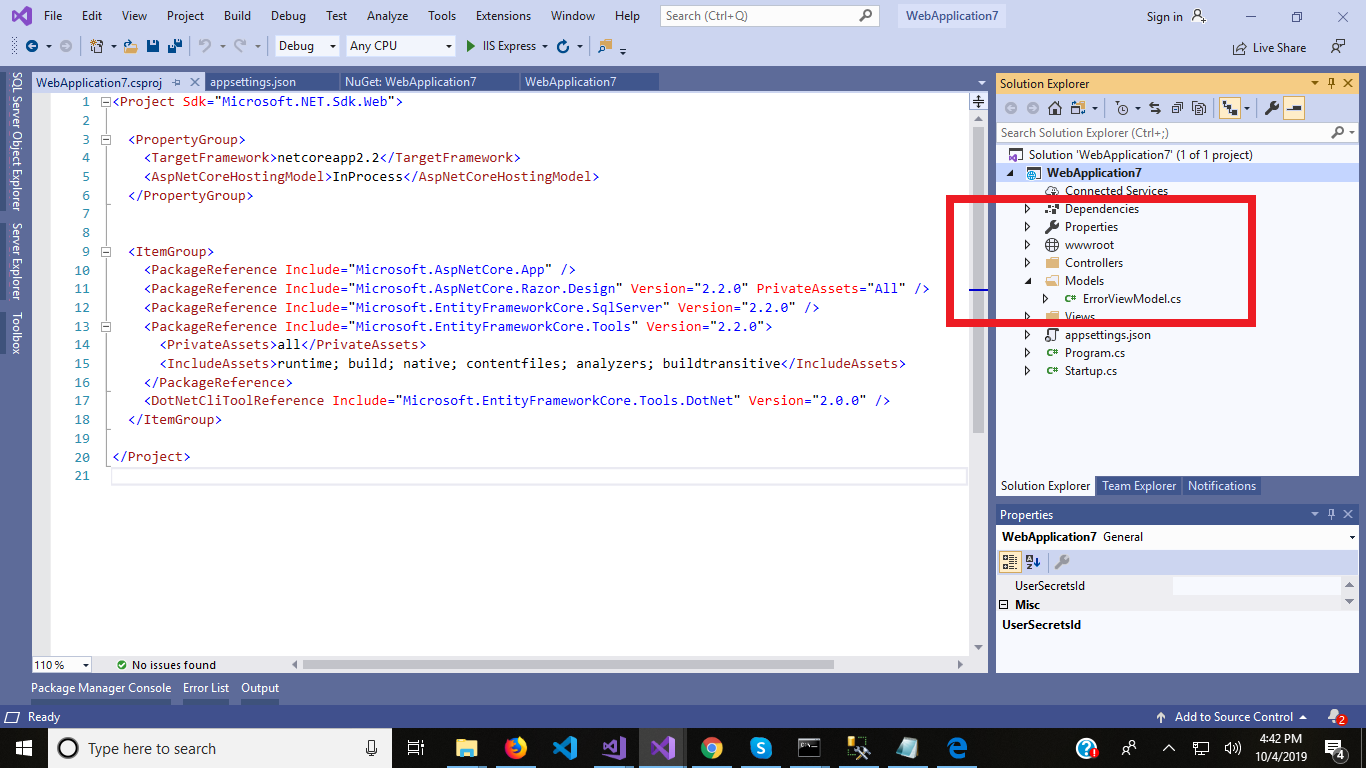

Scaffolding a DbContext is just a way to generate classes, that match the database.

#Scaffold dbcontext update
Currently, there is no option to update model from database schema and preserve manual changes. Note, however, that all changes done manually, will be overwritten. To do this, use -force parameter in the scaffold command.
#Scaffold dbcontext how to
However, if you’re not sure how to map your changes, you can always regenerate the whole DbContext with all entity classes. Those changes can be quickly applied in the entity classes manually. Most of the changes will be trivial, like adding a column to the table, renaming a table name, or change columns type. Whenever something changes in the database, you would need to update your model. More of that you can read in this Microsoft article. For example, string columns that can be null, will not be scaffolded as string? type. nullable types will not be mapped as nullable.also, EF Core documentation claims, that there are some column types that will not be included in the model.For example inheritance hierarchies, owned types and table splitting will not be reverse-engineered not everything about the model is presented in the database schema.However, there are some limitations to this process: Reverse engineering does a tremendous job of scaffolding entity classes so that we don’t need to write it on our own. Notice that only tables Events and Profiles were generated, DbContext class is named AspNetCoreCotext and all was generated in AspNetCoreModels directory. context AspNetCoreDbContext -context-dir AspNetCoreModels I’m going to modify my command, so it will look like this: dotnet ef dbcontext scaffold Name=aspnetcore -table Profiles -table Events -force will override the existing DbContext class and entity classes.-output-dir can be used to scaffold entity classes to a specific directory.-context-dir can be used to scaffold the DbContext class to a specific directory.-context can be used to give generated DbContext your own name.-use-database-names option will preserve the original database names as much as possible.-table can be used to include specific tables.Thankfully, there are more parameters that we can use. However, it would be nice to have some more control over the process. This command will add aspnetcoreDbContext and all entities representing your database. The command that we are going to use is very simple, run it in your project directory: dotnet ef dbcontext scaffold Name=aspnetcore

I’ve added a connection string with the name aspnetcore in ConnectionStrings section. Let’s go to the appsettings.json file and set up a connection string for our new database. We could pass it in our command, but we can also accomplish this task in a more elegant way by passing only its name. The scaffolding process needs a connection string to pass. You can also update the tool, once installed:
#Scaffold dbcontext install
Type this command to check it out: dotnet tool install -global dotnet-ef NET CLI tool, that you would have to install if you haven’t done it already. To perform this operation we will use the. The process is called reverse engineering and it is scaffolding entity type classes and a DbContext class based on a database schema. NET Core has tools to scaffold that and generate it for us. We could create it by hand and type everything manually. The next thing we need to do is to create our DbContext. We will add EF Core for aspnetcore database, which looks like this. It’s much faster than SQL Server Management Studio and now for most of my work, I just use the first one. I’m using an Azure Data Studio, which is a lightweight and fast tool that can perform most of the basic operations of databases. Now let’s connect to our database and see how it looks like. The last one reveals that we will work with the MS SQL Server database. To work with EF Core 5 we need to install NuGet packages: NETĪdding an Entity Framework Core 5 is super simple if you have an empty database, but is it that easy when working with a database that has some data inside? Do we need to map it all, or can we just work with a part of the database that interests us? Let’s start from the beginning. Here is an article about adding EF Core with migrations to an empty database: PrimeHotel – adding Entity Framework Core 5 in. Built-in mechanisms will translate your LINQ queries on your entity classes to SQL queries and return mapped objects.

Entity Framework Core 5 is a light and easy to use ORM, that let you use the database without writing any SQL commands.


 0 kommentar(er)
0 kommentar(er)
